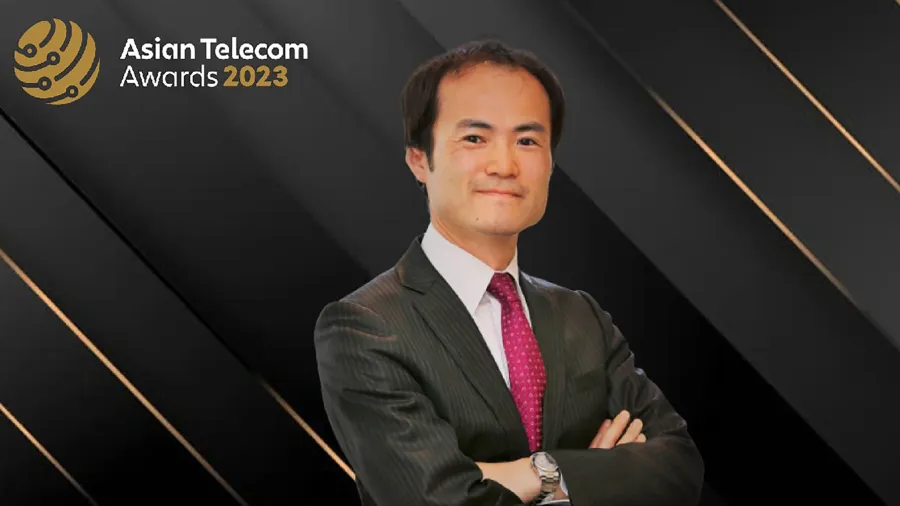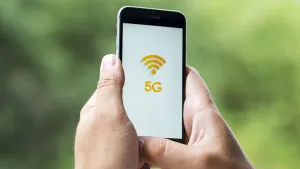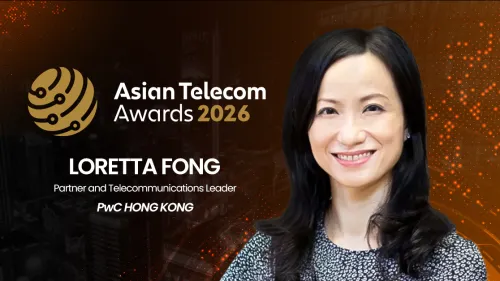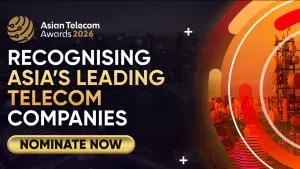
Digitalisation’s significance in driving sustainable social infrastructure in telecom
A Deloitte leader explains the importance of strong telecom infrastructure in a smart world.
With advances in technology come changes in society, where every city moves to become a smart city, creating interconnected business players and ecosystems but at the same time becoming increasingly complex.
Speaking with Asian Telecom, Michinori Sato is Deloitte’s Asia Pacific Communications, Media, and Entertainment Leader, where he is engaged in many consulting services such as business strategy, new business planning, digitisation strategy, global business reform, and M&A support. Focused on the telecommunications business and the high-tech manufacturing industry, he has over 20 years of consulting experience to support major telecom, media, and electronics clients across several areas.
Sato has a proven track record in competitive strategies in the digitalisation, 5G, and 6G eras, and management reform leadership that moves the front lines by linking several offices in Japan and overseas. He also has deep expertise in the telecommunications business, including new business development, B2B sales and marketing, branding of services, customer experience, DX strategy, finance operation, HR system, and talent and corporate organisational design.
Prior to joining Deloitte, he worked as well for other consulting firms in the TMT space. Recently, he also serves as a board member of Deloitte’s subsidiary company in cloud engineering.
Looking into the telecommunications industry today, Sato mentioned that demand will continue to grow as the world and its systems become more connected. He added that the positioning of telecom carriers in the market be reconsidered with this instance.
“It is time for incumbent carriers to rethink whether they will maintain and strengthen their management, technical and operational strengths in the network infrastructure business or focus their resources on specific network infrastructure elements,” he said.
As one of the main judges of this year’s Asian Telecom Awards, Sato discussed the issues facing the industry today, how sustainability plays into effect in the telecom realm, what technologies are redefining the industry, and protecting assets and preventing cybersecurity threats.
Given your consulting experience for telecom companies, what are some of the main issues that these companies are facing in today’s landscape? How do you think they should address these issues?
As the world becomes more connected, the demand for telecommunications will continue to grow, and it is about time that the positioning of telecom carriers in the market is reconsidered. Four major issues will be touched upon here. That is, whether they will continue to own their communications technology and infrastructure assets and enhance the quality of their communications technology services, whether they can make their customer engagements more market-friendly and customer experiences focused, how they interact with hyperscalers and cloud players, and how they enhance the employee experiences.
In Asian countries, telecom operators and national governments are proactive on the topic of telecom infrastructures, such as consideration of separating base station infrastructure, open technology in hardware and software, and optimisation of frequency band (re)allocation. Separate issues aside, it is time for incumbent carriers to rethink whether they will maintain and strengthen their management, technical, and operational strengths in the network infrastructure business or focus their resources on specific network infrastructure elements. This is because as connected business players and ecosystems become more complex and the telecom technology infrastructure itself evolves, unlike other social infrastructures such as power and water, dominating communication infrastructure can be a basis and strength for maintaining market positioning in the Smart World, but also entails ever greater investment and risk. On the other hand, open architecture and software-defined technology have been expanding their area from RAN to Core network, which provides wide options to telecom operators in terms of flexibility of network devices, outsourcing, or in-house operation, and time-to-market of new functions. Whilst it is inevitable to consider ROA and the cost of maintaining not only NW technology but also peripheral functions when setting up and owning communications infrastructure, all of these are important strategic choices in dealing with cloud operators.
Next, I would like to describe customer engagements with B2B and B2C separately. For B2B businesses, solution selling has been tried not only to sell communication line services and its ancillary services to the corporate market but also from the viewpoint of solving each customer's business problem. As smart cities become more common, it is becoming more common for social and corporate issues to be solved by multiple stakeholders rather than by one-to-one businesses. Whether or not carriers can play a role of an integrator of the devices and services offered by each company, or they can take a role in planning these Smart City use cases, will make a big difference in whether carriers can become mere line providers or market leaders who can take control in leveraging precious data. To promote 5G/MEC, monetisation is a big issue as before, but they should be on the side of drawing use cases as much as possible to position themselves as close to the solution provider as that.
For consumers as well, each carrier has continued to improve customer satisfaction and customer experiences in the telecommunications business. On the other hand, carriers are also busy developing new businesses through online applications. We feel that these non-telecom businesses and cross-business application UX are often challenged. On top of that, carriers have evolved the customer experience in their retail shops, and they have changed the positioning and numbers of retail shop channels along with an omnichannel strategy. Retail shops need to enhance their value as physical touchpoints to the customer. Carriers have been conducting various trials in retail shops, such as to increase the range of items to sell, gather the real voices of customers, and appeal to their corporate/product brand through physical and memorable experiences.
Even if carriers think they are developing their business from the customer's point of view (and there are still many cases where they are not), users are becoming accustomed to the seamless and affordable service levels offered by giant platformers, and operators that want to keep customer contact at the centre of value will have to speed up efforts to change their company's culture around CX.
Then, there's collaboration and competition with cloud players. At present, the competition in the area of connectivity has just begun with the MEC area as the boundary, and this is not only a battle for position in communication services but also a point directly linked to the business model strategy of who will take the front in incorporating communication services into use cases in the connected world, which will become one of the mainstreams in the future. On the other hand, in every carrier, cloud players are important customers and, in some cases, important collaborators for online services.
Both players have a large presence in the market, and are not issues that can be solved by zero-sum, but telecom operators should always prepare for potential competition with multiple strategic options and alliance partners to achieve co-existence and co-prosperity, at least in the short to medium term, whilst leaving the source of added value in the business model to the company. If they're behind the curve or not flexible enough in their response to the cloud player movement, they're more likely to be forced to choose an unpalatable option, even in cases that might otherwise be win-win.
The last is about enhancing employee experience (EX) value. From telecom NW design and AI engineers to new business development to corporate sales reps, telecom carriers have many talented employees. On the other hand, in an increasingly digitised society where there are more choices of places to work for talented employees of telecommunications companies, it is an important issue that will determine their competitiveness in the future whether they can enhance EX or acquire capable talents from outside. More and more companies are adopting purpose-driven management, but it will be necessary not only to develop aspirational strategies to boost employee motivation but also to conduct management and enlightenment activities to make a wider range of employees feel their work is rewarding and well-being.
One of the main trends in the market today is incorporating sustainability measures in business. What do you think this goal looks like in the telecom industry? How can companies be compliant with sustainability?
The common sustainability measures cited by the telecommunications industry are climate change, enhancement of EX, and contributing to society as a telecommunications infrastructure company.
In response to climate change, the volume of data communications in society is expected to continue to increase at an accelerated pace, so reducing the power consumption of data centres and telecom network equipment, which consume large amounts of electricity, and the use of green power are extremely important issues that telecom companies are tackling. In this field, there is a wide range of measures that can be taken to reduce power consumption, including the use of renewable energy, which can be implemented at the physical level by converting wiring in data centres into optical lines and reducing hardware power consumption, as well as at the software level by controlling base station antennas active/non-active with AI to reduce unnecessary power consumption.
In addition, as a telecom company with a significant impact on society, digital transformation is significant for driving sustainable social infrastructure including circular ecosystems, efficient transportation, and so on in semi-urban areas and local cities. Establishing monetisation methods, negotiating subsidies and regulatory reforms with the government, promoting the legitimate use of carbon credits, and driving-related corporate ecosystems are some of the sustainability activities expected of telecoms with a large influence on the economic social community.
In other words, the real value of a telecom company in the area of sustainability, which excels at "connecting" is to lead the synergy effect corresponding to Scope 3 of the GHG Protocol in connecting with customers, suppliers, and society.
Do you think the latest technologies such as artificial intelligence and machine learning can be utilised in improving network performance? How so? Are there other emerging technologies redefining the industry?
The proliferation of devices, data, and users has made managing networks and IT infrastructure more complex than ever. AI and ML can benefit network monitoring in a variety of ways, including the ability to correlate IT metrics with log data from different sources. However, whilst AI is evolving every day, it is not one-size-fits-all, and the key use cases for leveraging AI to improve NW performance that can be achieved today include detecting anomalies in time series data, analysing root causes of problems, dynamically adjusting allocated bandwidth, predicting user experience, and automatically correcting systems to maximise uptime.
Data is the starting point for these to work, and the richer, larger, and higher quality of the data, the smarter AI becomes. As the types of edge devices diversify into IoT sensors, mobile devices, and more, unstructured data is increasing in quantity, and the parallel evolution of deep learning technology is beginning to accommodate the processing of these unstructured data. In addition, technologies such as Extended Berkeley Packet Filter are emerging to improve the performance of data processing, which is expected to encourage the use of AI. The combination of these technologies has allowed several carriers to successfully maintain and enhance NW performance by performing proactive NW control, that is, allocating NW resources in advance before a failure or performance degradation occurs.
On the other hand, for real-time applications involving highly distributed edge devices, it becomes critical to collect data from all edge devices in real-time and then use AI algorithms to quickly process that data locally or in very close proximity, on edge computers or in the cloud.
Expanding the scope to include the entire network that will support the smart society in the future, it becomes necessary to optimise the network between these layers based on the requirements of each layer, such as optimising the logical network layer represented by slicing and optimising the application layer such as healthcare and transportation, in addition to the efficiency and optimisation of NW performance at the physical layer mentioned above. This is an orchestration that cannot be achieved without AI, and information such as business domain knowledge and the direction the ecosystem is going to take is also required as input to ML/deep learning.
With the proliferation of cyber security threats across the globe, how do you think telecom operators can protect their assets and prevent these threats? How about customers?
Deloitte conducted the Global Future of Cyber survey in 2021. According to the result from the telecom, media, and entertainment sector in the APAC region, 44% of the respondents, “Phishing, malware, ransomware” are the top cyber threats that organisations in the TM&E industry are most concerned about, followed by “Third party, unintended actions of employees”, and “Nation state actor threats” at 17% each.
On top of that, “operational disruption” and “intellectual property theft” are the top two biggest impacts of cyber incidents or breaches on TM&E organisations.
On the other hand, there is a global market trend in the telecom industry relevant to cyber security such as the industry shifting from purpose-built telecom technology to generic IT-based solutions, cloudification of solutions and associated diversification of solution providers, decentralisation of operator assets through partnerships and use of MEC, increasing traffic, an increasing number of devices, and thus, increasing the attack surface of vulnerable, connected devices, new technology players in the market, such as Microsoft and AWS, challenging established telecom vendors such as Nokia and Ericsson.
Along with the market trend above, there are related security issues for telecom operators and users. Amongst these are: security needs to shift from bespoke and decentralised security teams to IT-minded security teams, increased attack surface and unclarity in business continuity as well as security responsibilities across the stack, increased risk due to lesser physical controls and less oversight of assets, an increasing number of attacks on and from subscribers, lack of knowledge about how to integrate with these new vendors.
In addition, the potential security risks of 5G and ORAN features will also emerge in future communications environments. That is, features such as open specification, software-defined deployment and well-defined interfaces & integrations simultaneously include cyber risk. Cybersecurity threats are only going to grow, but as carriers, they need to keep track of evolving communications technology trends and their impact areas, whilst maintaining a systematic response and always being able to respond to threats immediately.
The key perspectives include "organisation, structure and resources," "information," "clarification of information security requirements," "information systems," "ensuring business continuity from the perspective of failures in critical infrastructure services," and "ensuring information security in outsourcing."
I would like to touch on corporate culture and human resources and outsourcing, especially in establishing organisations and systems. Carriers are expanding their business domains from traditional telecom services to peripheral digital services, as well as increasing the number of services offered through partnerships between multiple companies. In line with this, the reality is that the company is hiring talent from a variety of backgrounds. In addition, strengthening security and ensuring freedom of business are often trade-offs, and in many cases, whilst the recognition of the importance of ensuring cybersecurity is shared by a wide range of telecommunication operators' stakeholders, the security standards held by individuals are not consistent.
In some cases, even though information security departments have been established, the reality is that they have been thrown entirely at security vendors, and there is a shortage of personnel who can lead risk judgment and response planning. Even if we leave it to experts to figure out advanced server security threats and take technical countermeasures, carriers must have the people and teams determine what threats exist for their business and what precautions should be taken with what philosophy and standards. This is an important driver in promoting the aforementioned culture change with a sense of ownership.
Furthermore, the contents of contracts with outsourcers in IT systems and other operations, standards of conduct, and communication to create a common sense of security are as important as internal culture change and awareness raising. There are many other security incidents, not to mention those that are reported as incidents due to human error and sometimes crime, and as a telecommunications operator with a wide value chain, the key to preventing cybersecurity threats is not only to prevent them as a contractual relationship but also to continue to build a culture of mutually ensuring security in a natural way in each field operation.












